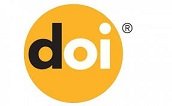Using a Next-Gen Platform and Deeply Digital Curricula to Support Alpha and iGen Learners and Their Teachers
Abstract
Keywords
Full Text:
PDFReferences
Akinyemi, A.F., Rembe, S., Shumba, J., Adewumi, T.M. (2019). Collaboration and mutual support as processes established by communities of practice to improve continuing professional teachers’ development in high schools, Cogent Education, 6(1). DOI: 10.1080/2331186X.2019.1685446
Arcavi, A. (2003). The role of visual representations in the learning of mathematics. Educational Studies in
Mathematics, 52(3), 215-241. DOI: 10.1023/A:1024312321077.
Bećirović, S. (2023). Digital Pedagogy: The use of digital technologies in contemporary education. Singapore: Springer Nature Singapore.
Bobek, E., Tversky, B. (2016). Creating visual explanations improves learning. Cognitive research: Principles and implications, 1(1), 27. https://doi.org/10.1186/s41235-016-0031-6
Darling-Hammond, L., & Hyler, M. E. (2020). Effective teacher professional development. Learning Policy Institute.
Darling-Hammond, L., Hyler, M. E., & Gardner, M. (2017). Effective teacher professional development. Palo Alto, CA: Learning Policy Institute.
Ertmer, P. A., & Ottenbreit-Leftwich, A. T. (2023). Removing obstacles to the pedagogical changes required by Jonassen's vision of authentic technology-enabled learning. Computers & Education, 64, 175-182.
Ferguson, S. (2020). Attrition in Online and Face-to-Face Calculus and Precalculus Courses: A Comparative Analysis. Journal of Educators Online, 17(1), n1.
Hattie, J. (2009). Visible learning: A synthesis of over 800 meta-analyses relating to achievement. Routledge.
Hyacinthe, V. (2020, December 22). Sign up now: Digital curriculum is here to stay. Kiddom Webinar. Retrieved from https://blog.kiddom.co/digital-curriculum-is-here-to-stay/
Kay, R., & Greenhill, V. (2021). The impact of technology-integrated pedagogy on student engagement and digital literacy. Educational Technology Research and Development, 69(3), 1225-1247.
Laal, M., Ghodsi, M. (2012). Benefits of collaborative learning, Procedia–Social and Behavioral Sciences, 3, 486-490. https://doi.org/10.1016/j.sbspro.2011.12.091
Mahan, K.R. (2020). The comprehending teacher: Scaffolding in content and language Integrated learning (CLIL), The Language Learning Journal. DOI:10.1080/09571736.2019.1705879
Mishra, P., & Koehler, M. J. (2020). Technological Pedagogical Content Knowledge (TPACK). In J. M. Spector et al. (Eds.), The SAGE encyclopedia of educational technology (pp. 886-888). SAGE Publications.
O'Reilly, J., & Hickey, D. T. (2022). Personalized learning in the digital age: Meeting the needs of digitally-native learners. Journal of Educational Technology & Society, 25(1), 93-104.
Palincsar, A. (1998). Social constructivist perspectives on teaching and learning. Annual Review of Psychology (49), 345-375.
President's Council of Advisors on Science and Technology (U.S.) & United States Executive Office of the President. (2010). Prepare and Inspire: K-12 Education in Science, Technology, Engineering, and
Math (STEM) for America’s Future. Washington D.C. 117 pp.
Twenge, J.M. (2017). iGen: Why Today’s Super-Connected Kids Are Growing Up Less Rebellious, More Tolerant, Less Happy and Completely Unprepared for Adulthood. New York, NY: Atria. pp. 342.
van de Pol, J., Volman, M., Beishuizen, J. (2010). Scaffolding in teacher–student interaction: A decade of research. Educational Psychology Review, 22, 271-296. DOI:10.1007/s10648-010-9127-6.
WestEd. (2008). Evaluating online learning: Challenges and strategies for success. Washington, DC: U.S. Department of Education.
What is Generation Alpha? (2020, November 4). The Annie E. Casey Foundation Blog. Retrieved from https://www.aecf.org/blog/what-is-generation-alpha/
DOI: https://doi.org/10.46328/ijonest.206
Refbacks
- There are currently no refbacks.
Copyright (c) 2024 International Journal on Engineering, Science and Technology
Abstracting/Indexing



International Journal on Engineering, Science and Technology (IJonEST)-ISSN: 2642-4088

This work is licensed under a Creative Commons Attribution-NonCommercial-ShareAlike 4.0 International License.
 International Journal on Engineering, Science and Technology
International Journal on Engineering, Science and Technology